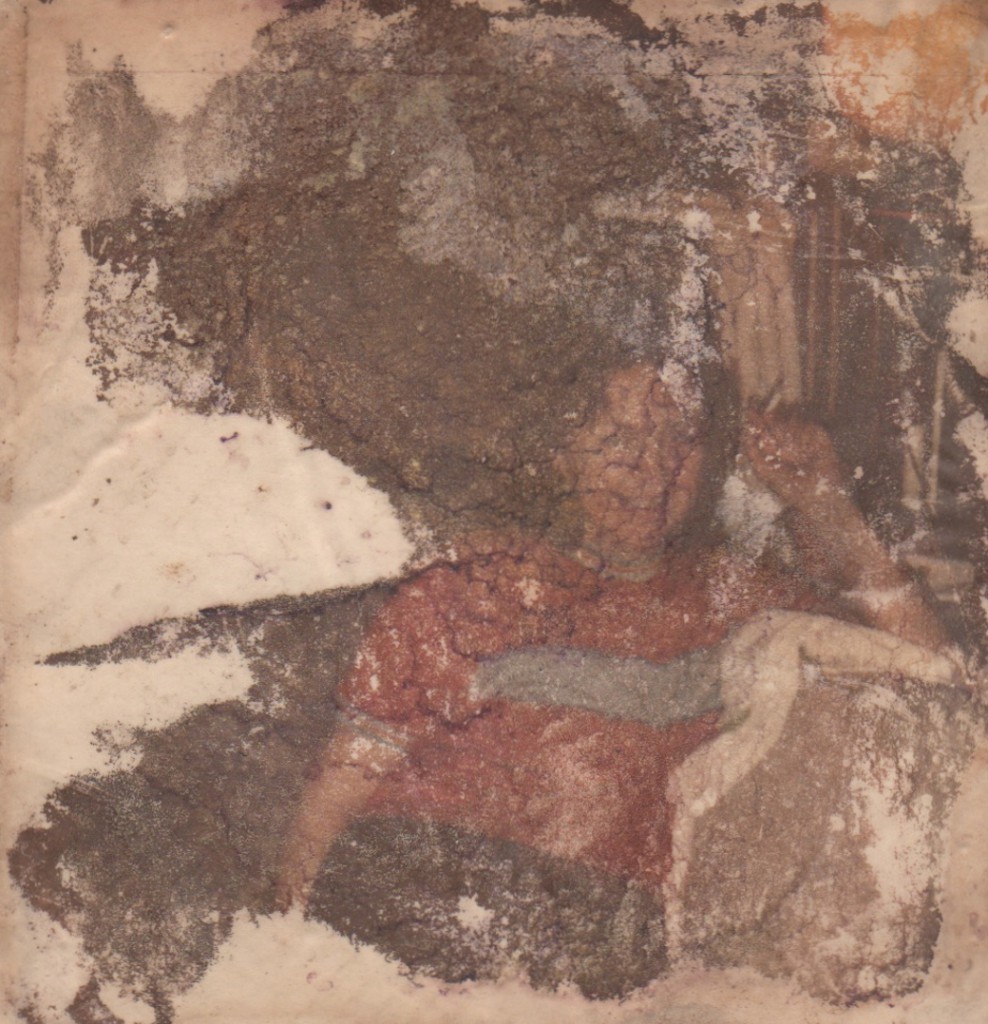At the Ostrog Monastery the body of Saint Basil—the Orthodox Christian Saint of Miracles—is enshrined in a reliquary in the cave-church dedicated to the Presentation of the Mother of God to the Temple. It was moved there during World War II to prevent it from bombings.
Saint Basil’s incorruptible relics continue to miracle the pilgrims who arrive weary to his holy corpse on display for public viewing.
Saint Basil received the monastic tonsure as a young man beginning study.
The tonsure allows for dialogue between the man and the god. This graphic haircut, like the proverbial tinfoil on the antennae of late model American automobiles, is a salve to the caustic relay between the internal and the external.
John Broadus Watson defines “behavior” as muscle movement and glandular secretions. Only those things that can be publicly witnessed.
(Perhaps that is redundant.) (Perhaps public supposes witness.) (Does public suppose witness?) (Oh but the unreliability of witness.)
Lauren Bender and I sat in her car in front of my house. My house is surrounded by young men who sell Cheryl and ready rock, fight sometimes, and spit.
Often, in the morning, just a wet white T-shirt remains, molded flat to the sidewalk.
In the car we did not have the radio on. She was trying to explain to me the difference between public and private events in the methodological construct known as behaviorism. It is difficult, this reliance on being seen. Also labile, in the face of ever more advanced ways of seeing.
Brain imaging techniques like: Functional Magnetic Resonance Imagining, Computed Tomography, Magnetoencephalography, Positron Emission Tomography, Electroencephalography, and Near Infrared Spectroscopy.
Making the private public.
The next day I received this text from L.B.: “rved and measured, and we know that memory is build five proteins and be measured prescientific me. So by that argument memory if the behavior, and could.”
Later in the week, and quite by coincidence, Jenny Graf told me about a book she is reading in which the author asserts that the self of the self in a person with Alzheimer’s has died while the body goes on living. She had taken umbrage with the author’s assertion. The narrowness of how the writer defined the experience of remembering.
Umbrage with the dismissal of an experience which could not be mapped or narrativized. Pinned down and hence, translated.
(It is commonly agreed that a well-conceived narrative experience is an important element of any successful game design. An accessible narrative experience. Narrative being a recognizable lineage of cause and effect.)
(Recognizable being translatable.)
Translation makes clarity. Translation makes recognizability. Recognition making the private public.
The objects Lygia Clark created for The Nostalgia of the Body are physical propositions. Affronts to passivity; sitting limp like displaced memories hoping only to be activated. Ceasing to be until activated.
As the saints, physically and externally incorrupt, lack an essential internal corruptibility so essential to our “private” selves, those parts of us able to be affected and changed by the public…
This ability to be changed by the usages of the public is at the core of what it means to be human. A mutable consciousness.
Through this public corruption Lygia Clark’s objects become experiential (translated to the individual body, which utilizes the object) and, in a way less public as the interface re-personalizes experience. That is, the object can be viewed publicly and the utilizing of the object can be viewed publicly but the experience of the sensorial interface can only be felt privately.
And oh the pleasure of feeling, privately. The singularity and specificity of the way we experience our senses are the carpets and cushions of our internal landscapes.
This is one of our few possessions, this way we experience our senses. (Set aside for a moment the way the word “possess” flips backward and forward in this usage.) The way we think we own these experiences, these feelings.
The conceptual dissonance of the prideful/shameful coveting we engage in when feeling…
is weighed against the intense desire we have to share and trade, unite, and transcend the intensity that privacy exacerbates.
This is why the humans try.
And why there is a word lonesome.
And also why there is such a thing as a camera. The way it seems to promise a pause or the miracle of another’s perspective…
With its so many metaphors and its dangerous and tantalizing suggestion that experience can be shared, made public.
“Remember it was sort of sunny? Remember you turned away and at just that moment Suzie saw the bird fly through the rainbow? Remember how sad and angry you were at having missed it? See how sad and angry you were? Look.”
